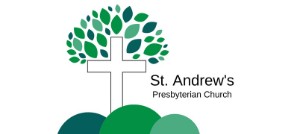What Happens Next…
Transfiguration SundayThere are many stories in the Bible to which we can relate despite the fact that they were written long ago. However, the story of the Transfiguration of Jesus, even by Biblical standards, is strange. Because it is so difficult to understand, we might diminish the significance as it seems to have little relevance to our own story.
Transfiguration means literally a change in form. The Greek word used here means metamorpho, to change the outside to match the inside. Jesus invited three of his disciples Peter, James, and his brother John, to join him at the top of Mt. Tabor. Suddenly, something unexplainable happens, Jesus was transfigured before them, his “face shown like the sun and his garments became as white as light.”
Matthew uses a form of language that New Testament writers use when explaining what cannot be described with ordinary language. The phrase “his face shone like the sun and his garments became as white as light” enables us to see what ordinary vision cannot see. This language lifts the veil and allows us to see what has been hidden. This kind of language tells the truth but not in a scientific way.
Moses and Elijah, two critical figures known to any Hebrew, appear with Jesus, talking with him. Somehow, the disciples knew that this moment, this place had a spiritual significance they couldn’t have explained if their lives depended on it.
Peter, as usual, speaks first and offers his idea. “Lord, let’s set up three tents, one for you, one for Moses, and one for Elijah.” This kind of monument would resonate with any Hebrew since they carried tents through the desert for 40 years on their way from captivity in Egypt to the Promised Land in Canaan. Peter wanted to hold onto this sacred moment forever.
Then there was a bright cloud overshadowing Jesus and out of it a voice saying, “This is my beloved son, with whom I am well pleased, listen to him.” The three disciples “fell to the ground and were overcome by fear.” Jesus touched them and told them to get up and not be afraid.
The disciples ended up on the ground in fear in response to the transfiguration. We can understand that. The changes and challenges we face in our lives and in this congregation may tempt us to put our fingers in our ears and yell, “stop!” We are comfortable with the way that is familiar or the way we think our lives should be.
To better understand, let’s go back a few steps to where we began when Jesus wanted to go up the mountain in the first place with these disciples. The passage begins with a reference to six days before. Their experience of six days ago would have still been simmering in their hearts and especially Peter’s. That is when Jesus asked the disciples, “Who do people say that I am?”
The disciples answered, “John the Baptist, Elijah, or one of the prophets.”
Jesus pressed, “Who do you say that I am?”
Peter answered, “You are the Messiah, the son of the living God.”
“Blessed are you, Simon, no mere human showed this to you. My Father in heaven showed this to you.”
Jesus continued to explain to the disciples what would happen to him, his suffering and eventual crucifixion and resurrection. Jewish leaders opposed him and threatened his life.
Peter was the first to object and say, “Never Lord.”
It’s important to notice that this Transfiguration story happens in the middle of Matthew. We’ve heard those words before at the beginning of Matthew during Jesus’ baptism. “This is my son, the beloved, in whom I am well pleased.”
At this point in the middle of Matthew, the disciples were unaccepting of Jesus’ talk of death and defeat. That is not why they signed up to be disciples. John the Baptizer had even asked if Jesus was who he said he was, or should they look for another?
Rev. Dr. Tom Long, Professor of Preaching Emeritus at Emory University’s Candler School of Theology writes that “in an even deeper way at the Transfiguration of Jesus, his face shines like the Sun, his clothes are dazzling white, and we see that this man born of a woman is more than that. This is my son, the beloved. You can trust him. I am well-pleased with him. Follow him. What we see in the Transfiguration of Jesus Christ is that God is bringing into our world an unveiling, into our world the grace and blessing of God.”
I remember when our daughter Margaret was very young, she would sit in the back of the car and wave her hands in the air as she sang along with a tape of praise songs. I was surprised by her charismatic expressions of her love for Jesus. In our church experience, we always held our hymn books tightly as we sang of our love for God.
After finishing University, she entered seminary and became a candidate for ministry. Throughout this process, many on the Presbyterian committee for preparation of ministry wanted to dictate what her vocation would become. Their concept of valid ministry was limited to that of a parish minister. Year after year, she was clear that her calling was pediatric chaplaincy, and no one on that committee, until the end, would give her space and permission to follow that call.
Now years later, we listen to the stories of her ministry in a children’s hospital. How she sat with a mother whose baby died unexpectedly, how she regularly ministered to a family and celebrated when their young child was finally going home. and knowing that the adult she would become. She doesn’t present this image in everyday conversation.
Tom Long tells of the Jewish interpretation that seems to fit how we might recognize each person we encounter as God’s beloved child. It says that a procession of angels walks in front of every person we meet, blowing a horn and announcing, “make way for the image of the Holy One.”
Transfiguration Sunday and the approaching season of Lent provide an opportunity for our assumptions to be transfigured right along with Jesus. Lent is an opportunity to lift the veil, to listen deeply and differently through these forty days between Ash Wednesday and Easter.

